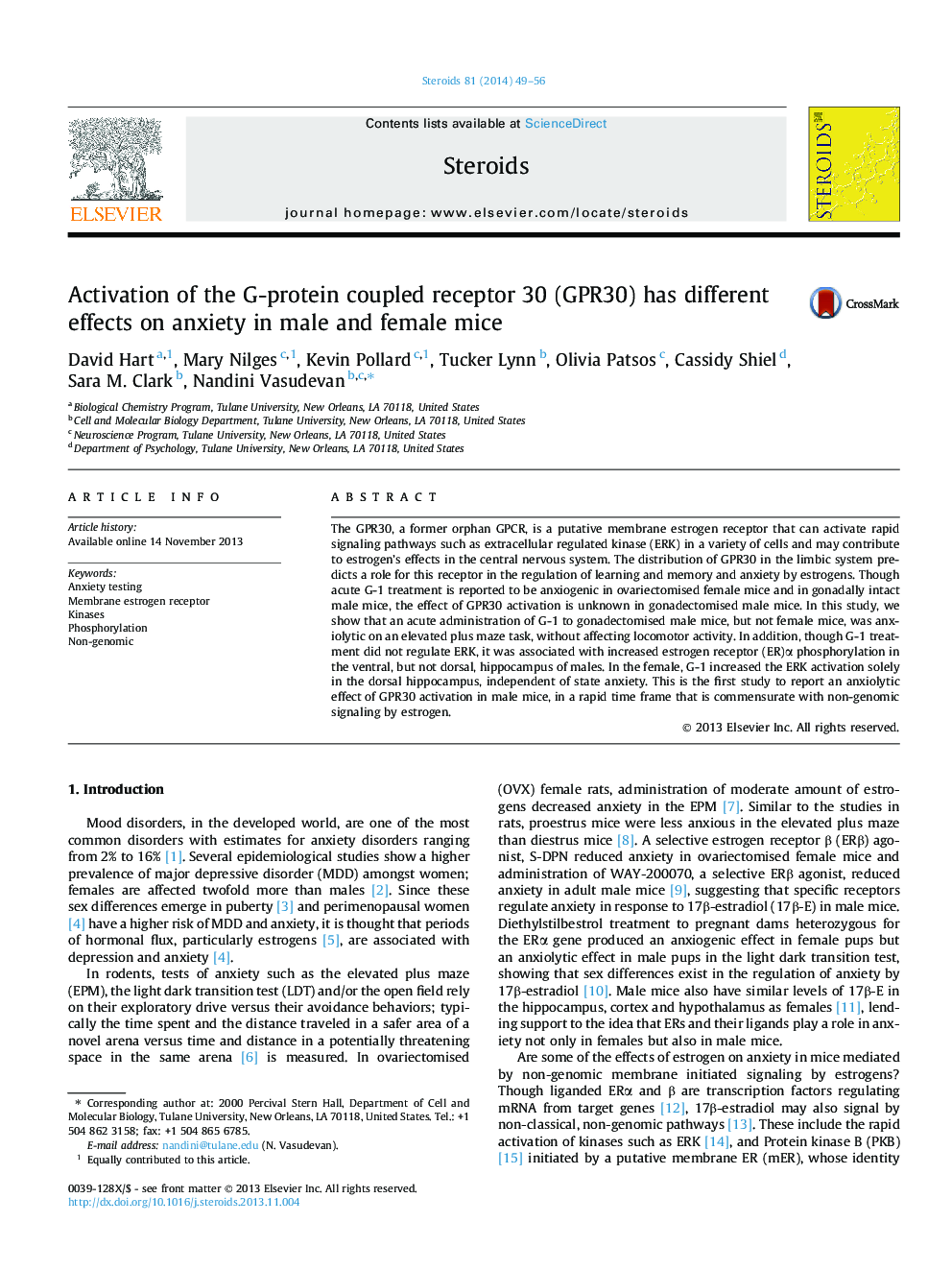| Article ID | Journal | Published Year | Pages | File Type |
|---|---|---|---|---|
| 2027841 | Steroids | 2014 | 8 Pages |
•GPR30 activation has different effects on anxiety in males and females.•In males, the anxiolytic effect is correlated with greater phosphorylation of ERα.•In both sexes, there is no correlation between ERK signaling and anxiety regulation.
The GPR30, a former orphan GPCR, is a putative membrane estrogen receptor that can activate rapid signaling pathways such as extracellular regulated kinase (ERK) in a variety of cells and may contribute to estrogen’s effects in the central nervous system. The distribution of GPR30 in the limbic system predicts a role for this receptor in the regulation of learning and memory and anxiety by estrogens. Though acute G-1 treatment is reported to be anxiogenic in ovariectomised female mice and in gonadally intact male mice, the effect of GPR30 activation is unknown in gonadectomised male mice. In this study, we show that an acute administration of G-1 to gonadectomised male mice, but not female mice, was anxiolytic on an elevated plus maze task, without affecting locomotor activity. In addition, though G-1 treatment did not regulate ERK, it was associated with increased estrogen receptor (ER)α phosphorylation in the ventral, but not dorsal, hippocampus of males. In the female, G-1 increased the ERK activation solely in the dorsal hippocampus, independent of state anxiety. This is the first study to report an anxiolytic effect of GPR30 activation in male mice, in a rapid time frame that is commensurate with non-genomic signaling by estrogen.
